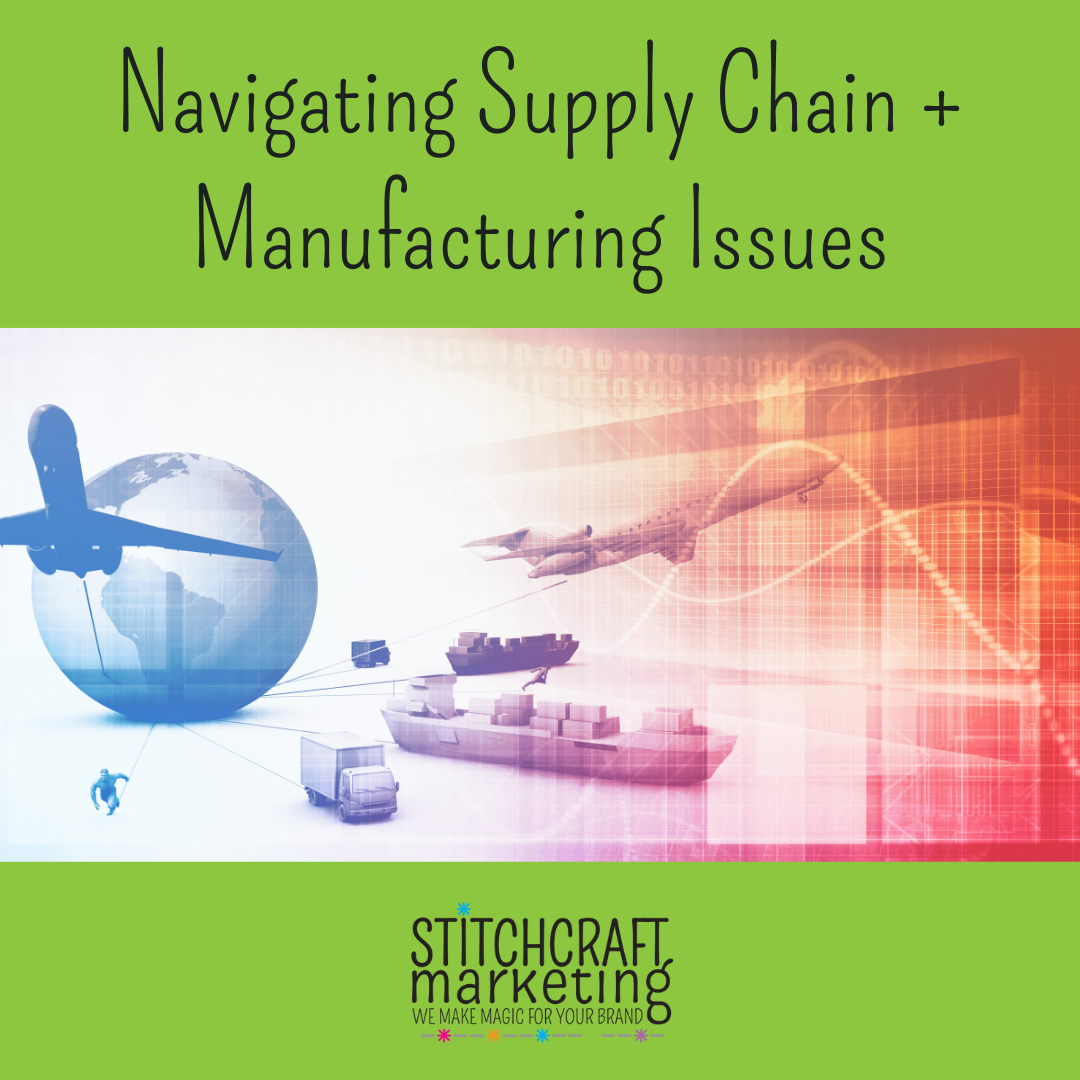
18 May Navigating Supply Chain + Manufacturing Issues
Expansion of the global marketplace has heretofore had a positive impact on business, creating increased competition, more efficient markets, and greater opportunities to expand customer bases. COVID-19, however, has weakened links in the global supply chain, generating a ripple effect on businesses here and abroad.
Several factors continue to disrupt the normal, healthy flow of the global supply chain, impacting everyone from manufacturer down to customer. While the pandemic certainly contributed to this disruption, growing demand has long been a stressor even before COVID-19.
Scarcity in all of logistics is disrupting the chain, from labor to warehouses to ports to shipping containers and more. As demand rises, capacity reduces, and prices increase to match. Over the last five years, skyrocketing shipping rates have blown up business budgets. The demand is there, and manufacturers are boasting record sales, but shortages in labor, raw materials, and products have created a bottleneck. The pandemic exacerbated the situation, as global ports and airports closed, factories shut down, and labor was laid off. Now that life is slowly returning to a new normal and demand continues to grow, the bottlenecks in the supply chain only serve to drive up prices even further. Restarting the global machine has produced difficult circumstances for everyone.
Navigating these fluctuating issues, which are influenced by so many different, interlocking factors, will be difficult for both small and large businesses. Many of these fluctuations are out of your control. But as a business owner, there are a few things you do have control over that can make a difference.
Strengthen Supplier Relationships
Right now, everyone is waiting on inventory. Strengthening the relationship you have with your suppliers could be the factor that bumps your business up the waiting list. Something as simple as knowing your supplier by name, calling to personally check in, and understanding that delays are inevitable goes a long way during this difficult time. Communicate your own flexibility: can you accept slower delivery for certain items to make it easier on your supplier? Make an effort to cultivate strong relationships with your best suppliers. If you don’t know the owner’s first name, the likelihood is they won’t take your call when you need them the most.
Take opportunities to meet your suppliers face to face, such as at events like h+h americas. As small business owners, you know too well the impact of the personal touch. Invest in your supplier relationships so that they remember you and strive to take care of you.
Diversify Your Supply Chain
Relying on a single supplier versus diversifying your suppliers could be the difference between all of your products stuck sitting at a port and simply suffering from reduced inventory for a short period of time. It’s important to develop strong relationships with your suppliers, but it’s equally important to avoid putting all your eggs in one basket.
Build resilience into your product offerings by crafting a broader ecosystem of suppliers. Try to research their transport and logistics partners to determine how many of them overlap and rely on the same channels (supplier mapping can help you visualize this interconnected network). By creating a stable of suppliers that hail from different sectors of the globe, you strengthen your network should any one of them face disruptions.
Reassess Inventory Practices
Businesses are facing excessively long lead times to receive their products. As you look to diversify your suppliers, also consider how to diversify your inventory. Stockpiling products is difficult in the craft business as trends and seasonal shifts dictate an ever changing landscape of products; however, you likely can identify tried-and-true products that consistently drive sales for your business.
Creating a backlog of essential inventory that has proven in the past to be a strong support for your business can be a good strategy. It’s a delicate balance between further stressing the supply chain, analyzing customer demand, and determining the products that deliver stable sales.
Assess Customer Behavior
We have always stressed the importance of your business’s ability to pivot during periods of economic uncertainty. It might be that the business model that worked pre-pandemic and pre-supply chain disruptions no longer works for your business.
Take time to analyze your customer’s behavior in recent months to strategize your future goals. You may find the absence of certain products due to supply chain issues hasn’t so much created a vacuum as it has carved out space to pursue different offerings. Perhaps you can pivot to replace the physical products stuck at ports with educational or online services. Be open to shifting the dynamics of your business to tap into current demand.
Communicate With Customers
Everyone is dealing with supply chain issues right now. While we wish there were a magic fix, the reality is all businesses are battling long lead times and reduced inventory. You may not be able to move things faster along the chain, but you can communicate these issues with your customers.
Transparency is a powerful trust builder. If customers expect items in stock at a certain time, the best thing you can do is communicate any issues with the utmost transparency. Communicate with your mailing list and your social media channels frequently. Use it as an opportunity to promote the products or services you do have available.
If you’re interested in learning more about navigating supply chain and manufacturing issues, check out Episode 5 of this season’s Business of Craft Podcast where Leanne chats with Chad Hendricks, the founder and president of Brand Outcomes, an agency focused on helping businesses recruit and retain truck drivers.
We hope we’ve provided valuable insight into how to best navigate the ever changing issues that affect the global supply chain. If you’d like additional information and help strategizing next steps, contact us today!


No Comments